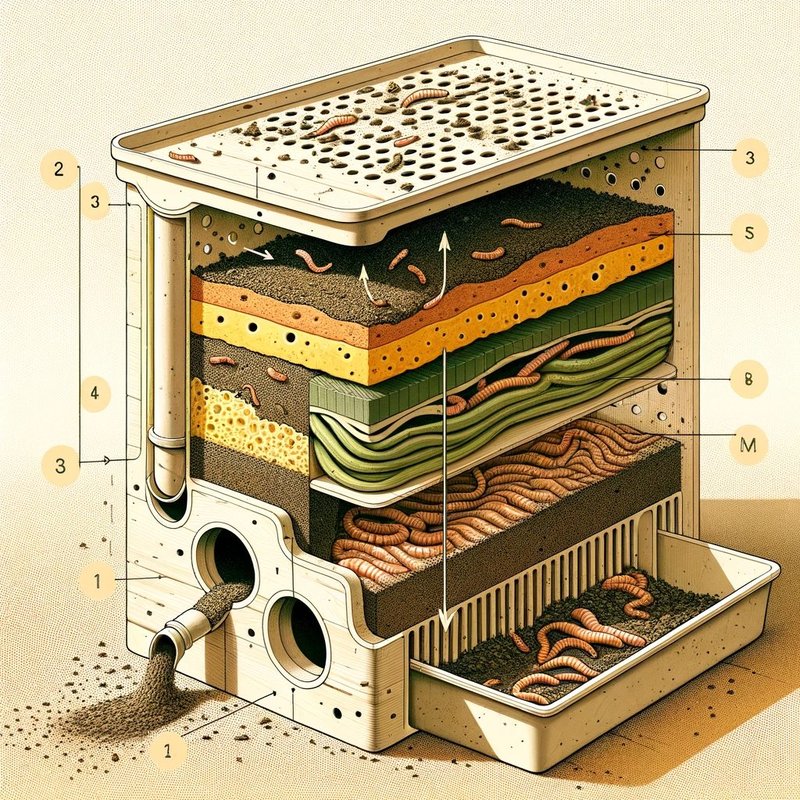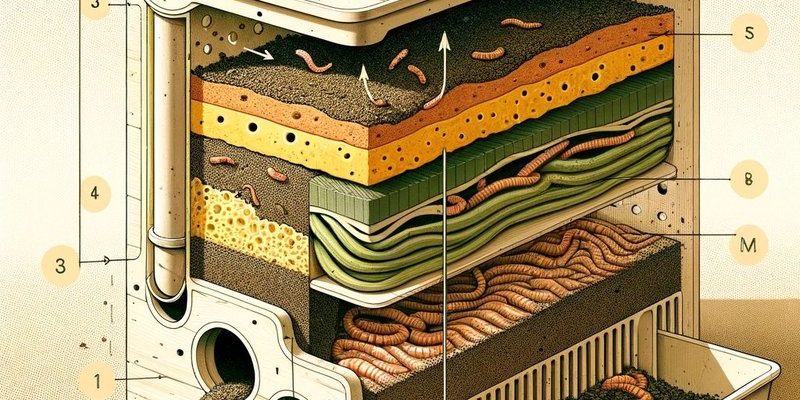
Let me explain: worm bin worms, particularly the popular Red Wiggler (Eisenia fetida), are nature’s recyclers. They munch on organic matter and in return, provide us with black gold—rich, fertile compost that revives your garden. Understanding how these creatures feed can help you create an effective worm bin that keeps them happy and productive. So, grab your favorite coffee, settle in, and let’s dive deep into the feeding mechanism of worm bin worms!
1. What Are Worm Bin Worms?
You might be wondering what makes worm bin worms so special. Unlike regular garden worms, worm bin worms are specifically adapted for life in composting environments. They thrive in decaying organic matter, making them excellent for turning your vegetable peels, leftover fruit, and even coffee grounds into compost.
Imagine them as tiny composting machines with a voracious appetite. These worms can eat up to half their body weight in food every day! By breaking down these materials, they not only reduce waste but also enrich the soil with essential nutrients. Their natural habitat is dark, moist, and rich in organic material—perfectly mimicking the inside of a well-maintained worm bin!
2. The Basics of Worm Feeding
Feeding your worm bin is key to keeping your wiggly friends healthy and productive. So, what should you feed them? The general rule is to provide a mix of greens and browns.
Greens are high in nitrogen and can include:
- Fruit and vegetable scraps
- Grass clippings
- Coffee grounds
Browns provide carbon and can include:
- Dry leaves
- Shredded newspaper
- Cardboard
Just like a balanced diet is essential for us, it’s crucial for worms too! Too much of one or the other can lead to problems such as odors or slow decomposition.
3. How Worms Eat
So, how do these tiny wrigglers actually consume their food? Worms don’t have teeth, so their feeding process may seem a bit surprising. Instead of chewing, they take in food through their mouths and grind it down using a special part of their digestive system called the gizzard.
Picture it like this: the gizzard acts like a blender, squishing the food into smaller bits. This process makes it easier for their bodies to extract nutrients. The chew-and-churn method works wonders, breaking down the food into a mushy mix that can be digested efficiently.
4. The Role of Microorganisms
Here’s the thing: worms are not in this alone. They have a team of tiny helpers working behind the scenes—microorganisms! When you add organic matter to the worm bin, these microorganisms, such as bacteria and fungi, start breaking it down into simpler compounds.
Worms eat this partially decomposed food along with the microorganisms, creating a symbiotic relationship. The microorganisms benefit by having a place to thrive, while worms receive essential nutrients and enzymes. This partnership is what makes your worm bin so effective at composting kitchen scraps.
5. Feeding Dos and Don’ts
Feeding your worms can feel like an art at times. Here are some essential dos and don’ts to keep your worm bin happy:
Dos:
- Feed them a variety of food scraps.
- Chop or shred larger pieces to make it easier for worms to eat.
- Monitor the moisture level—worms prefer their food damp but not soggy.
Don’ts:
- Don’t feed them meat or dairy; these can attract pests.
- Avoid adding too many acidic foods like citrus, which can upset their environment.
- Don’t overfeed; if you notice excess food, it’s a sign you’re giving them too much.
By sticking to these guidelines, your worm bin will thrive, and you’ll be on your way to producing rich compost in no time!
6. Signs Your Worms Are Well-Fed
As you embark on this worm bin adventure, it’s important to know what a healthy, well-fed worm bin looks like. Here are some signs your worms are thriving:
1. Active Worms: Healthy worms are active and wriggly. If you see them basking in the light, they might not be happy with their conditions.
2. Decomposing Food: If your food scraps are disappearing within a week, that’s a great indicator your worms are doing their job.
3. Rich Compost: Look for dark, crumbly worm castings. This nutrient-rich material is the gold star of your composting efforts!
If you notice issues, such as bad odors or pests, it’s time to reassess your feeding habits and bin conditions.
7. Troubleshooting Common Feeding Issues
Even in the best worm bins, issues can pop up. Let’s tackle some common problems:
– Bad Odors: If your worm bin smells bad, you might be overfeeding or adding the wrong kinds of food. Check for uneaten scraps and adjust accordingly.
– Pests: Fruit flies can become a nuisance if you add too much food or if it isn’t buried deep enough in the bedding. Cover new food with a layer of damp newspaper to keep them at bay.
– Worm Migration: If worms are trying to escape, they might be unhappy. This can happen if the bin is too wet, too dry, or if they’re overfed. Adjust the conditions, and ensure proper moisture levels.
Understanding these issues can help you maintain a healthy environment for your worms.
8. Conclusion
Feeding your worm bin worms might seem like a simple task, but it’s a cornerstone of successful vermicomposting. By knowing what to feed them and how they process their food, you’re on your way to creating an efficient composting system right in your kitchen or backyard.
Remember to strike a balance between greens and browns, monitor their health, and troubleshoot any issues you encounter. With these tips, you’ll be well on your way to producing rich compost that benefits your garden and the environment. Happy composting!

